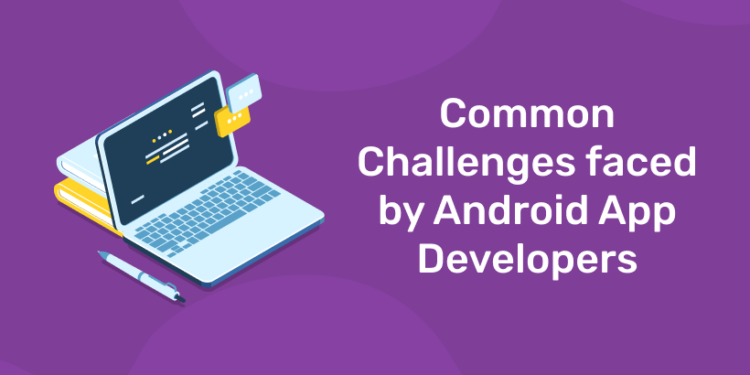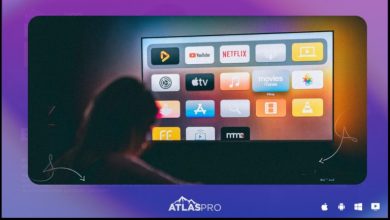In the fast-paced digital landscape, mobile applications have become an integral part of our lives, and Android apps, in particular, dominate the market. However, developing a seamless and user-friendly Android app is no easy feat. Developers often face numerous challenges that can hinder the development process. In this blog, we will explore some common challenges in Android app development and discuss effective strategies to overcome them, ensuring the smooth provision of Android App Development Services.
Platform Fragmentation:
Android operates on a wide array of devices with varying screen sizes, resolutions, and hardware specifications. This fragmentation poses a significant challenge as developers must ensure their app functions seamlessly across this diverse ecosystem. To overcome this, developers can leverage responsive design principles and conduct extensive testing on different devices and screen sizes, utilizing emulators and real devices alike.
Security Concerns:
Security is paramount in mobile app development. Android, being an open-source platform, is susceptible to malware and security breaches. Developers can address this challenge by encrypting data, using secure communication protocols, and regularly updating the app to patch security vulnerabilities. Additionally, integrating robust authentication mechanisms and permission systems enhances the app’s overall security.
Limited Resources:
Developers often face constraints in terms of time, budget, and skilled personnel. To overcome this challenge, it’s crucial to prioritize tasks effectively and adopt agile development methodologies. Outsourcing certain components of the development process to specialized Android App Development Services can also be a strategic move, allowing developers to focus on core functionalities while experts handle specialized tasks.
Optimizing Performance:
Android apps must be optimized for speed and efficiency to provide a seamless user experience. Bloated code, excessive background processes, and inefficient algorithms can slow down an app. Developers can overcome this challenge by employing efficient coding practices, optimizing images and multimedia elements, and minimizing network requests. Regular performance testing and profiling can identify bottlenecks and enable developers to enhance the app’s overall performance.
User Interface (UI) and User Experience (UX) Design:
Creating an intuitive and visually appealing UI/UX is vital for user engagement. Android apps must adhere to Material Design guidelines while ensuring a unique and user-friendly experience. Collaborating with UI/UX designers and conducting user testing can help refine the app’s design, ensuring it aligns with user expectations and preferences.
Compatibility Issues:
Android apps must be compatible with various operating system versions. Compatibility issues often arise when new OS versions are released. To address this challenge, developers should stay updated with the latest Android SDK versions and libraries. Regularly testing the app on different OS versions and addressing deprecated functionalities ensures compatibility across a broad user base.
App Monetization:
For developers looking to monetize their Android apps, choosing the right monetization strategy is crucial. Common strategies include in-app advertisements, freemium models, and subscription services. Researching user preferences and market trends can help developers select the most effective monetization method for their app, maximizing revenue while providing value to users.
App Store Policies and Guidelines:
Publishing an app on the Google Play Store involves adhering to strict policies and guidelines. Failure to comply can result in app rejection or removal from the store. To overcome this challenge, developers must thoroughly review and adhere to Google’s guidelines. Conducting extensive quality assurance testing and addressing any policy violations before submission ensures a smooth approval process.
Optimizing for Diverse Screen Sizes and Resolutions:
Android devices come in various screen sizes and resolutions, making it imperative for developers to optimize their apps for different displays. Responsive design techniques, such as flexible layouts and scalable images, can ensure that the app adapts seamlessly to various screen dimensions. Developers should also consider designing adaptive UI components that adjust dynamically, providing an optimal user experience across devices, from smartphones to tablets.
Continuous Testing and Quality Assurance:
Thorough testing is indispensable in Android app development. Regular and rigorous testing, including unit testing, integration testing, and user acceptance testing, helps identify and rectify issues early in the development process. Automation tools can streamline testing procedures, allowing developers to focus on resolving critical issues. Comprehensive quality assurance protocols guarantee that the app functions flawlessly, enhancing user satisfaction and app credibility.
Effective Collaboration and Communication:
Smooth communication and collaboration between developers, designers, and stakeholders are pivotal. Clear communication ensures everyone involved understands the project objectives, timelines, and expectations. Regular team meetings, progress updates, and brainstorming sessions foster a collaborative environment, allowing developers to share insights, address challenges collectively, and innovate solutions. Collaboration tools and project management platforms can facilitate efficient communication, enabling seamless coordination among team members.
Scalability and Future-Proofing:
An Android app should be scalable to accommodate growing user demands and evolving technologies. Building a scalable architecture from the outset ensures the app can handle increased user loads and additional features without compromising performance. Moreover, future-proofing the app involves staying updated with emerging technologies and trends. Integrating cutting-edge features and technologies, such as augmented reality (AR) or artificial intelligence (AI), can give the app a competitive edge and enhance user engagement.
Community and Developer Support:
The Android developer community is vast and active. Developers can leverage community forums, online communities, and open-source resources to seek solutions to challenges. Engaging with the community provides access to valuable insights, best practices, and troubleshooting tips. Additionally, Google offers extensive documentation, tutorials, and developer guides that serve as valuable resources for developers, aiding them in overcoming hurdles and staying updated with the latest Android development trends.
Conclusion:
In the dynamic realm of Android app development, challenges are inevitable, but with strategic planning, collaboration, and a proactive approach, these challenges can be effectively tackled. By addressing issues related to platform fragmentation, security, resource limitations, performance, UI/UX design, compatibility, app monetization, and adhering to app store policies, developers can ensure the successful creation and deployment of high-quality Android applications.
For businesses and entrepreneurs seeking reliable and expert assistance, partnering with specialized Android App Development Services is a prudent choice. These services not only bring technical expertise but also offer a holistic approach, guiding businesses from concept ideation to app deployment. By understanding and conquering these challenges, developers can deliver Android apps that stand out in the competitive market, providing exceptional user experiences and driving business growth.
Read more :





